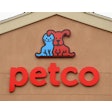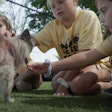
Chile's pet food market may look abundant at first sight. Shelves are filled with local and imported brands, and more than 8,000 SKUs arrive through imports alone. But abundance does not always mean alignment. According to a report by Triplethree International, the real story is not about variety, but about the gaps that remain untouched. These white spaces — product and price territories without dominant players — are quietly shaping the next competitive chapter of the industry.
Variety without segmentation
The paradox is striking: Chile has one of the most diverse assortments in Latin America, yet much of it is fragmented and misaligned with shopper needs. The issue is not scarcity but the lack of segmentation, leaving consumers without clear pathways.
In the snacks category, this becomes very clear. Pet owners are willing to pay far more than the cost of basic dry food when it comes to indulging their pets. Yet within snacks, the middle segment is missing: there are low-priced options and very high-end ones, but little in between. That empty space leaves the door open for brands that can deliver a premium touch while still keeping prices accessible.
Dry food shows the same imbalance. Most options are crowded at the low end, while the high end is firmly controlled by global brands. In the middle, there's hardly anything. It's not disorder so much as a lack of guidance: shoppers see extremes, but very few solid choices that combine functionality with aspiration.
Specialized channels show this even more clearly. Veterinary clinics and pet shops record the highest prices in the market, but they also display a very wide spread — from economic products to ultra-premium and even therapeutic diets. According to the report, this wide range of prices is not chaos but simply fragmentation. There is no single reference price, only different brand strategies. For companies that understand why shoppers buy — to treat their pets, for convenience, or on a vet's advice — this diversity is not a problem but a chance to grow.
A sophisticated but misaligned shopper
Behind these white spaces is a changing consumer. Chilean households are shrinking — from 2.8 people in 2025 to a projected 2.5 by 2035 — and pets are now central household members. Nutrition is part of the story, but so are companionship, emotional bonds and status.
As the report emphasizes, Chilean pet owners are among the most sophisticated in Latin America. Yet their expectations often collide with an offer that looks broad but feels misaligned.
That paradox — high consumption, thousands of SKUs, yet unmet needs — makes Chile a laboratory where growth will come not from more products, but from smarter segmentation.
In Chile, the most interesting part of the market is not what exists — but what doesn't. Whoever identifies and owns those invisible spaces will shape the future of pet food.
Iván Franco is the founder of Triplethree International and has collaborated on hundreds of research projects for several consumer goods industries.















